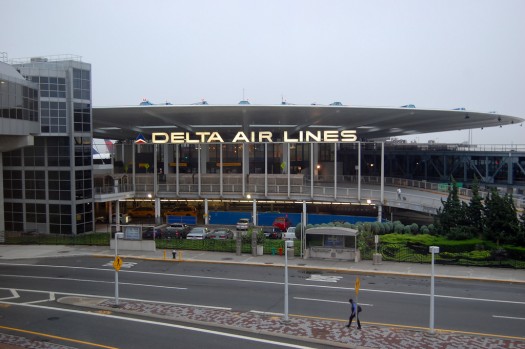
We are celebrating 15 years — and counting — of stories that are deeply researched and deeply felt, that build a historical record of what the city has been.
We are celebrating 15 years — and counting — of stories that are deeply researched and deeply felt, that build a historical record of what the city has been.
Last week Mayor Bloomberg appointed David Bragdon, former president of the Oregon Metro Council — an elected regional planning agency — and a rumored mayoral candidate in Portland, to head up the Mayor’s Office of Long-Term Planning and Sustainability, which is charged with administering PlaNYC. Portland has certainly made a name for itself in urban planning and urban sustainability circles over the past several years. Following the hiring this spring of former Indianapolis mayor Stephen Goldsmith as his deputy mayor for operations, the choice of Bragdon to head up his long-range vision for a greener New York proves the Mayor’s commitment to attracting city management talent from across the country. As climate change continues to wreak unprecedented havoc worldwide this week, with Russia in flames and Pakistan under water, it is the responsibility of all scales of government — local, regional and national — to continue to develop proactive and innovative plans to address the root causes of climate change.
With the frequency of apocalyptic natural disasters only seeming to increase, the major lessons we learned at the Institute for Urban Design’s Rebuilding a Sustainable Haiti symposium — that relief is not reconstruction, that holistic approaches to recovery and service delivery must engage national development frameworks, that investments in education and health are inextricable from infrastructure — resonate with the humanitarian nightmare continuing to unfold in Pakistan. An area the size of Italy is currently underwater. And while the known death-toll is mercifully lower than the Haiti earthquake or the Asian Tsunami, the scale of devastation is far greater: tens of millions of homes and livelihoods have been destroyed, cholera is spreading fast, and the worst of the flooding is not necessarily over. Speaking at the Asia Society yesterday, George Soros reminded the audience not to forget, amid the appeals for immediate assistance, the role that continued emission of greenhouse gasses has played in warming the planet and making its storms stronger. If you’re looking for ways to help, one option is Relief4Pakistan, a grassroots campaign working with MercyCorps. To donate $10 to the UN High Commission for Refugees from your mobile phone, text “SWAT” to 50555.
Our friends at We Make Money Not Art have a comprehensive review of a new book called Urban Interventions — Personal Projects in Public Spaces. The work described in the book — 200 projects that, according to publisher Gestalten, “surprise and provoke with work in cities including New York and London, but also in countries such as China, Columbia, and Turkey” — reminds us of the extent to which performances, installations and creative structural improvements in public space have become a genre of public art unto themselves. The emerging field of practice, of course, also includes many architects and designers seeking to suggest alternative uses and futures within public space, kind of like the temporary structures built from found materials over the course of the Make a Difference in Two Days Event we hosted with Bryan Bell in late 2008.
Sometimes, proposing the redesign of a public object on your own initiative doesn’t require a one-off installation. Especially if you can share it with readers of the New York Times. Interdisciplinary design team antenna (who have lent their considerable talents to everything from subway cars to office furniture) recently offered a Times op-art piece that points out what’s wrong with New Yorkers’ least favorite TV screens — the ones in taxis — by offering a viable alternative scheme.
Not too long ago, we took a walk with Neil Freeman to the geographical center of New York City. If that whet your appetite for centers, then head to Lebanon, Kansas for “The Centers of the USA,” an exhibit of the Center for Land Use Interpretation, open indefinitely since August 14th. “The exhibit depicts and describes several of the ‘Centers’ of the United States, such as the geodetic center, in Lucas, Kansas; the geographic center, near Belle Fourche, South Dakota; and the current population center, in Edgar Springs, Missouri.”

Photo: Eric Allix Rogers
Lights out for the flying saucer: the Architect’s Newspaper reports that Terminal 3 will be demolished and Terminal 4 will be expanded. As much as we love mid-century modern, Terminal 3 has been need of an overhaul for some time now. Any chance the expanded Terminal 4 will be as much fun as the JetBlue terminal?
The Roundup keeps you up to date with topics we’ve featured and other things we think are worth knowing about.
The views expressed here are those of the authors only and do not reflect the position of The Architectural League of New York.